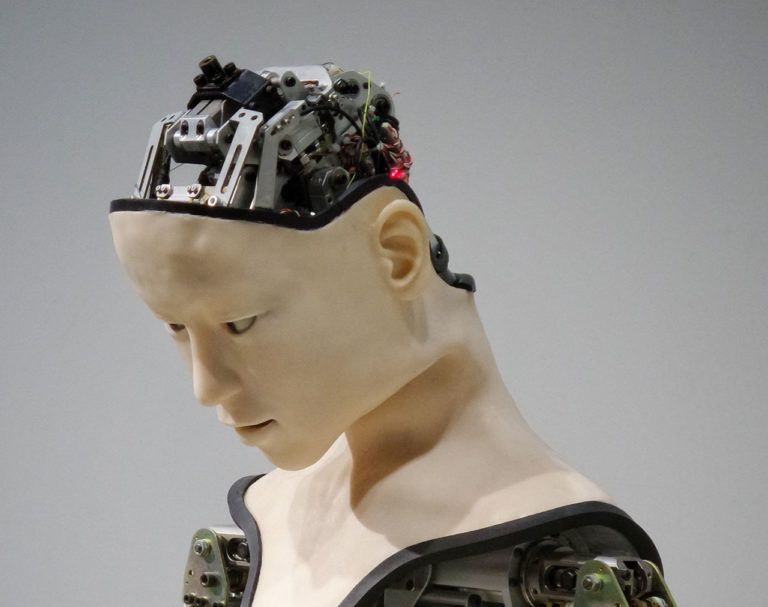Hiroshi Ishiguro: The master of robotics who is changing our future
Exploring the world of androids, geminoids, and telenoids with a visionary in robotics
A professor in the Innovation Systems department at the Graduate School of Engineering Science at Osaka University, Hiroshi Ishiguro conducts studies at the Advanced Telecommunications Research Institute (ATR). He’s also the author of robotics books such as “Android Science” and “What is a Robot?” and built humanoid robots that made him famous — including one in his image and likeness.
Maker Faire Rome’s 2023 Opening Conference will include guest speaker Hiroshi Ishiguro, a true robotics leader. It’s an opportunity not to be missed for robotics enthusiasts, people working in the field, and those fascinated by the human-machine relationship and robots’ future roles in our everyday lives.
Hiroshi Ishiguro’s robotics
Hiroshi Ishiguro’s research focuses on android, geminoid, and telenoid. He’s also among the most well-known international names in artificial intelligence research. But what makes him famous are his humanoid robots. These fascinating creations symbolize the aim of his research: integrating robots into everyday life. To achieve this goal, however – according to Ishiguro – it’s necessary to remember that, as human beings, we naturally tend to interact mostly with our peers. Therefore, the best way to encourage interaction between humans and androids is to make them equal. Ishiguro dreams of a future where robots, completely integrated on a social level, resemble us: from their appearance to their movements, from their tone of voice to their reasoning. To prove this is possible, he created the robot that made headlines worldwide: Geminoid HI-1.
What makes Geminoid HI-1 special?
Geminoid HI-1 is a robotic copy of Hiroshi Ishiguro. The robot has Ishiguro’s haircut, clothes, face, and personality. An utter rock star at conferences and presentations, Geminoid HI-1 is made of silicone rubber, has facial muscles, the Japanese professor’s real hair, and can engage in complex conversations in any language. Ishiguro controls his robot remotely via a computer, microphone, and camera. Geminoid HI-1 was designed to replicate his facial movements, including speaking, blinking, and expressions.
“Hello, everyone, and welcome to this conference. In reality, I’m a copy of Professor Ishiguro. I’m an android. I’m made of silicone, and there’s a computer inside of me. If I wanted to, I could introduce this conference. Unfortunately, he’s here today, so I’ll let him do the talking.”
These are the words of Geminoid HI-1 to introduce its creator during one of his visits to Italy at the “Humanlike Robots And Future Society” conference at the MACRO in Rome. Yet, as ingenious as it is, Geminoid HI-1 can’t mimic all human behaviors. Rather, it’s good to remember why it was created, that is, to explore the interaction between humans and machines and, in particular, to understand how our brains respond to the visual stimulus of a robot as if it were human.
Ishiguro’s other creations: Repliee Q2, Repliee R1 and Geminoid F
To create robots that are increasingly similar to us, Ishiguro researches cognitive neuroscience and sociology, underlining the importance of knowing human beings thoroughly before creating something that resembles them. Ishiguro followed this vision of robotics by creating other androids, such as Repliee Q2, a self-aware robot capable of singing songs from the Disney repertoire, and Repliee R1, an android identical to his 4-year-old daughter. Among the professor’s other success stories is Geminoid F, created in collaboration with the University of Palermo, which famously acted in a theater.
Solutions to the Uncanny Valley Phenomenon
Despite the success of these androids, Ishiguro faced the challenge of “Uncanny Valley.” This hypothesis, introduced by Masahiro Mori, a Japanese robotics scholar, analyzes how people’s positive familiarity with anthropomorphic robots could become unpleasant (such as repulsion and disturbance) when the robot’s extreme realism reaches its peak. To address this problem, Ishiguro developed Telenoids, robots with neutral expressions, that have been successful in elderly care centers. Ishiguro’s vision goes beyond the creation of androids: his work considers questions about the future of society and the role of robots at home, in public, and at work.
More about Hiroshi Ishiguro
Hiroshi Ishiguro was born in Shiga in 1963. At first, he was passionate about painting, but during a Hanao Mori workshop at Yamanashi University, he fell in love with robotics. After earning a Ph.D. from the Graduate School of Engineering Science at Osaka University, Ishiguro studied at some of the most prestigious robotics universities for his android, geminoid, and telenoid research. His influential role within the robotics community also extends to industrial robotics through the Vstone Foundation, which facilitates the transfer of ideas and technology from the academic to the business world.
His work with Vstone and much more makes him one of the most influential people in robotics and artificial intelligence. His dedication to technology and academia is the foundation for a futuristic society.
While we aren’t yet living in a fully futuristic society, you can meet Hiroshi Ishiguro and listen to him live at the Maker Faire Rome 2023 Opening Conference.
Don’t miss this opportunity and take part in the 11th edition of the festival that celebrates innovation. Meet the future at Fiera di Roma from 20 to 22 October. For more information, visit www.makerfairerome.eu. Tickets are available online.
Maker Faire Rome – The European Edition has been committed since its very first editions to make innovation accessible and usable to all, with the aim of not leaving anyone behind. Its blog is always updated and full of opportunities and inspiration for makers, makers, startups, SMEs and all the curious ones who wish to enrich their knowledge and expand their business, in Italy and abroad.
Follow us, subscribe to our newsletter: we promise to let just the right content for you to reach your inbox. Tickets to Maker Faire Rome – online only – 2023 are already available.



















































































